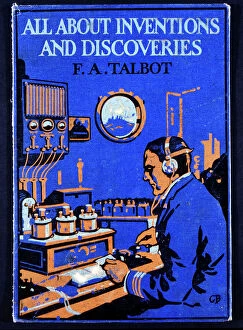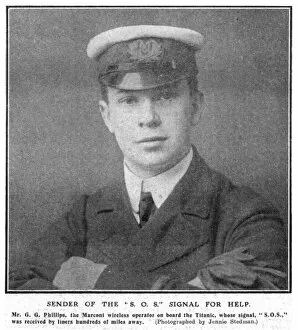Wireless Operator Collection
"The Unsung Heroes: Wireless Operators and their Vital Role in Communication" In the early 20th century, a new breed of heroes emerged - wireless operators
All Professionally Made to Order for Quick Shipping
"The Unsung Heroes: Wireless Operators and their Vital Role in Communication" In the early 20th century, a new breed of heroes emerged - wireless operators. These skilled individuals played a crucial role in connecting people across vast distances, often under challenging circumstances. Imagine being aboard a ship in 1916, witnessing a wireless operator diligently sending messages by Morse Code. Their nimble fingers tapped out vital information, bridging the gap between ships and shore. They were the lifeline for sailors at sea. One such unforgettable moment was on April 20, 1912 when an unknown sender transmitted the S. O. S signal from RMS Titanic. This distress call marked one of history's most tragic events but also highlighted the bravery and dedication of these operators who fought against time to save lives. Even during wartime, wireless operators continued to serve with unwavering commitment. A black-and-white photograph captures a British Vickers Wellesley long-range bomber's operator skillfully managing communications amidst chaos and danger. Telecommunications training became paramount as technology advanced rapidly. In 1941, Charles Brown captured an image showcasing young minds engrossed in learning this intricate craft that would shape our future communication systems. The significance of wireless transmission cannot be understated; it revolutionized global connectivity. The Croydon Aerodrome's transmission room depicted in a photograph from 1928 stands as testament to this progress - wires crisscrossing like veins carrying important messages through thin air. But not all stories had happy endings; tragedy struck again on April 15, 1912 when RMS Titanic met its icy fate. Jack Phillips valiantly remained at his post until the very end - forever etching his name into history as one of those who sacrificed everything to ensure others' safety. As we remember those lost souls lying peacefully beneath the ocean waves near Titanic's final resting place, let us also pay homage to all wireless operators who selflessly served humanity.


















